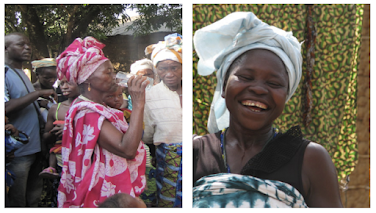In light of the dire sanitation situations in Nairobi's slums I discussed in my previous post, let's discuss some of the solutions that have been employed!
Nairobi has a unique policy that favours participatory, people-centred approaches towards sanitation and acknowledges non-government organisations (NGOs) and community-based organisations (CBOs) as crucial stakeholders. NGOs/CBOs are thus highly engaged in policy discussions with the government. Despite this, there is a dearth in actual collaboration between these actors for service delivery. Instead, NGOs/CBOs operate autonomously in slums and are the primary sanitation service providers.
However, donor funded sanitation programmes that purely focus on the provision of WASH infrastructure tend to be unsustainable 'solutions' as they fail to change mindsets regarding sanitation practices and knowledge. In response, Plan Kenya introduced Community-Led Sanitation (CLTS) in Kenya as a participatory approach that promotes open defecation free (ODF) communities, by using 'disgust, shame and fear' to 'trigger' the community towards collective action. CLTS renders the problems of open defecation visible and challenges discomfort and taboos surrounding having discussions about 'shit'. Facilitators do not instruct the communities on what to do, but aim for natural leaders to emerge and take charge of ODF plans after being 'triggered'.
Left: CLTS triggering in Sierra Leone
Right: A woman laughs at the amount of shit her neighbour produces during a CLTS exercise.
CLTS facilitators 'trigger' the community through:
- Mapping their household and defecation areas
- 'Transect walks' to visit areas of open defecation (Figure 1)
- Calculating amount of faecal matter produced
- Estimating expenses for open defecation related medical treatments
- Tracing the flows of faeces within the community to make explicit the contamination of food and water as a result of open defecation (Figure 2)
Figure 1: Questions asked during a transect walk to open discussions on open defecation (
Source)
Figure 2: Highlighting the flows between water, food and faeces during a CLTS exercise in Mathare (
Source)
The effectiveness of urban CLTS
hinges on the state. The
Kenyan state played a crucial role in creating appropriate regulatory environments to hold all actors accountable: landlords, public health workers, legislators and policy-makers. This program culminated in more landlords agreeing to create space to build latrines for their tenants, a marked decrease in open defecation, and replacement of 'flying toilets' with a bucket system that is applicable to women especiall
y. Government-initiated plans to construct sewer lines that will connect to all nearby households are also underway in Mathare, along with roads, power lines and 2 more public-pay toilets.
Some final thoughts on sanitation
Reflecting on my two WASH blogposts, I realise the importance of a locally contextualised and gendered reading of sanitation solutions. Normative ideas of individual household latrines in a 'Western' setting cannot be enforced onto informal settlement communities. In fact, communal latrines are often more appropriate and effective in Kibera and should not be dismissed by the state or international development actors as a lesser option. A study found that informal settlement communities often have entirely different usability criteria of a communal latrines than NGOs and CBOs, meaning that it is especially important to consider their embodied gendered experiences when attempting to address this issue.
Evidently, building sanitation infrastructure in slums is not enough to improve inadequate WASH situations - communities must actively be involved to ensure the sustainability of WASH solutions.




Comments
Post a Comment